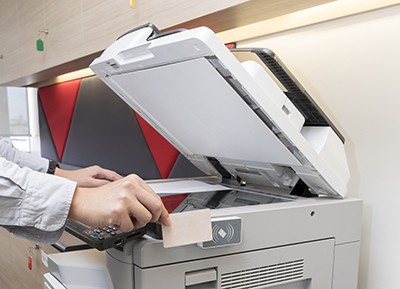Printer Security Protects from Data Breaches
Introduction Most IT departments do not commonly address the topic of printer security, but it should be. Printer security protects your business...


In our tech-driven world, businesses need to constantly evolve, and the devices we rely on need to keep pace. One element that often takes a back seat but plays a pivotal role in office functionality is the print fleet. If you're experiencing inefficiencies or facing persistent challenges, it might be time to consider an upgrade. Today, we'll explore the top five signs your business might need a printer fleet overhaul.
Real-world example: A local law firm prided itself on timely service. As they prepared for a significant case, they needed to print and organize several documents for a crucial client meeting. Their primary copier, however, faced frequent downtimes, often needing repairs.
On this particular day, the machine failed them completely. They couldn't get the documents ready in time, leading to a poor impression on their client. The client, valuing speed and efficiency, decided to switch to a rival firm. Their outdated print fleet not only caused delays in daily work but also resulted in a substantial loss of business.
Real-world example: A new marketing agency worked to produce vibrant, high-quality promotional materials for their clients. As they reviewed their yearly expenses, they discovered their printing costs were alarmingly high.
Their outdated office printers consumed excessive toner and the frequent need for parts replacements added to the costs. Comparing their expenses with industry standards, they realized they were spending nearly 20% more on printing. By getting new, cost-effective machines, they cut expenses, boosted profits and gave clients better prices.
Real-world example: A design startup frequently collaborated on designs with international clients using cloud platforms. Their print fleet, however, lacked cloud connectivity.
On one occasion, they were working on a large project requiring rapid iterations based on client feedback. Because their printers weren't cloud-integrated, they wasted valuable hours manually downloading, transferring, and then printing designs.
Their competitor had printers with cloud access and showcased faster turnarounds, securing a profitable deal that the startup wanted.
Real-world example: A finance company specializing in personal loans, had an outdated print fleet without modern security features. One day, a smart hacker exploited this weakness, gaining access to the company’s network through an unsecured printer.
The leak of confidential client financial data led to a scandal that local news covered. The company faced lawsuits, hefty penalties, and a tarnished reputation. Many clients lost trust and switched to more secure financial institutions.
Real-world example: A publisher was talking to an environmentally friendly author who wanted to find a publisher for her new books. The author prioritized eco-friendliness and sustainability.
While visiting the company, she saw their old printers that were not eco-friendly and produced excessive waste. Their lack of eco-friendly practices made her change her mind. She ended up signing with a competitor that had a modern, eco-friendly printing fleet, showing their dedication to green practices.
If any of these signs apply to your business, it means it's time to upgrade your print fleet. And here's the silver lining - you don't have to navigate this journey alone!
Fraser Advanced Information Systems helps make your printing operations efficient, affordable, and up-to-date with technology. Don't let outdated machines hold your business back. Contact Fraser today and let us help you stay ahead of the curve!
Ready to transform your office operations? Let's make printing woes a thing of the past. Reach out now!

Introduction Most IT departments do not commonly address the topic of printer security, but it should be. Printer security protects your business...

Introduction In today's digitally connected world, ensuring the security of your company's IT infrastructure is a top priority. However, many...
.png)
Ever feel like your office budget has a mysterious leak? You're on track one minute, and the next, you're pouring money into something you didn't...